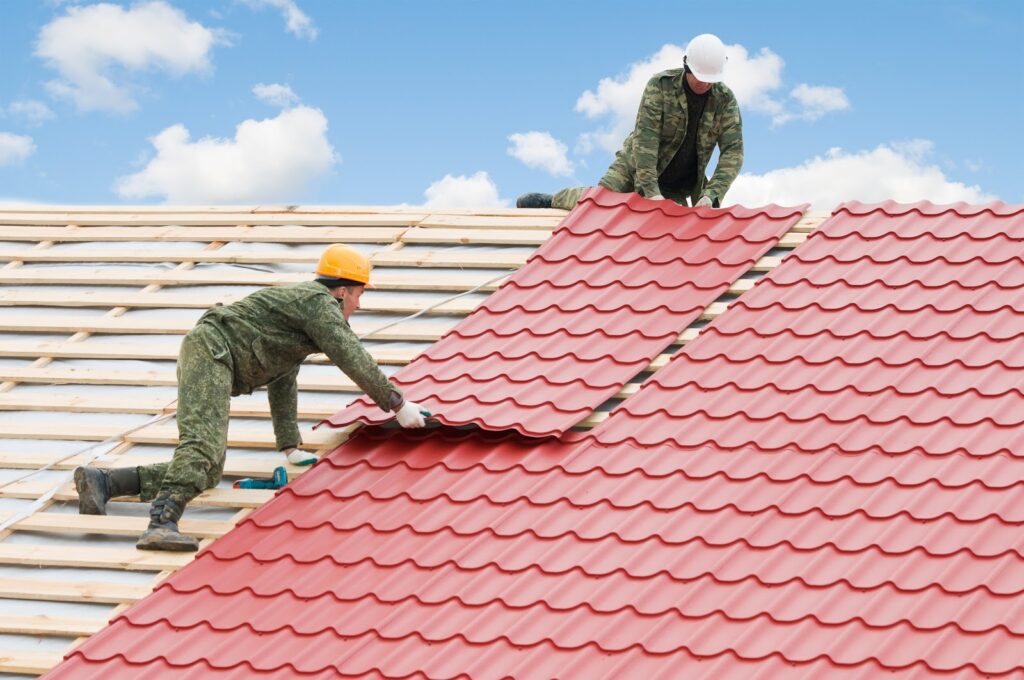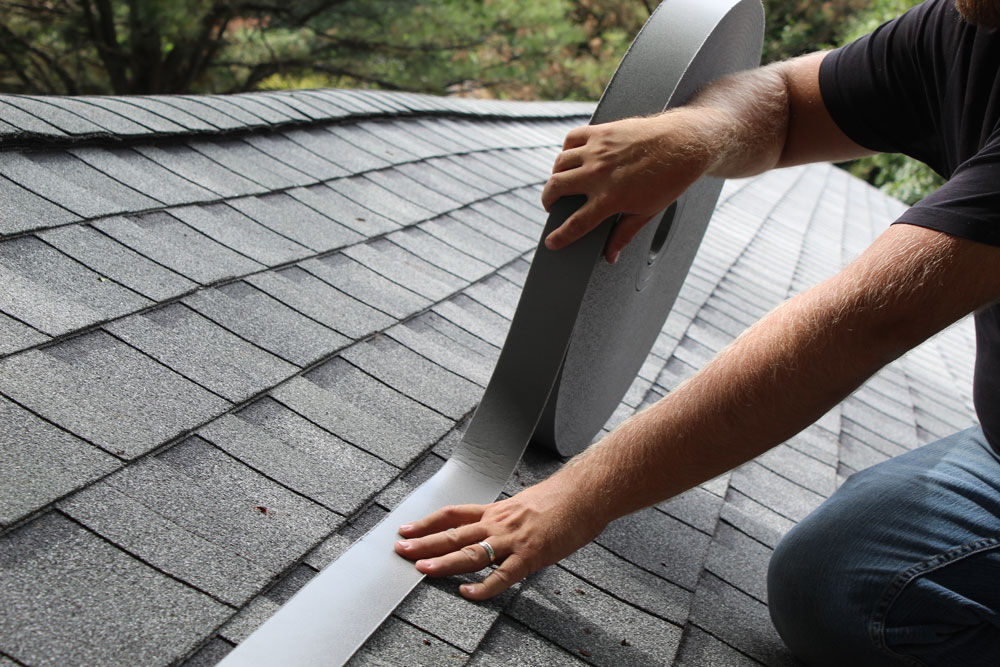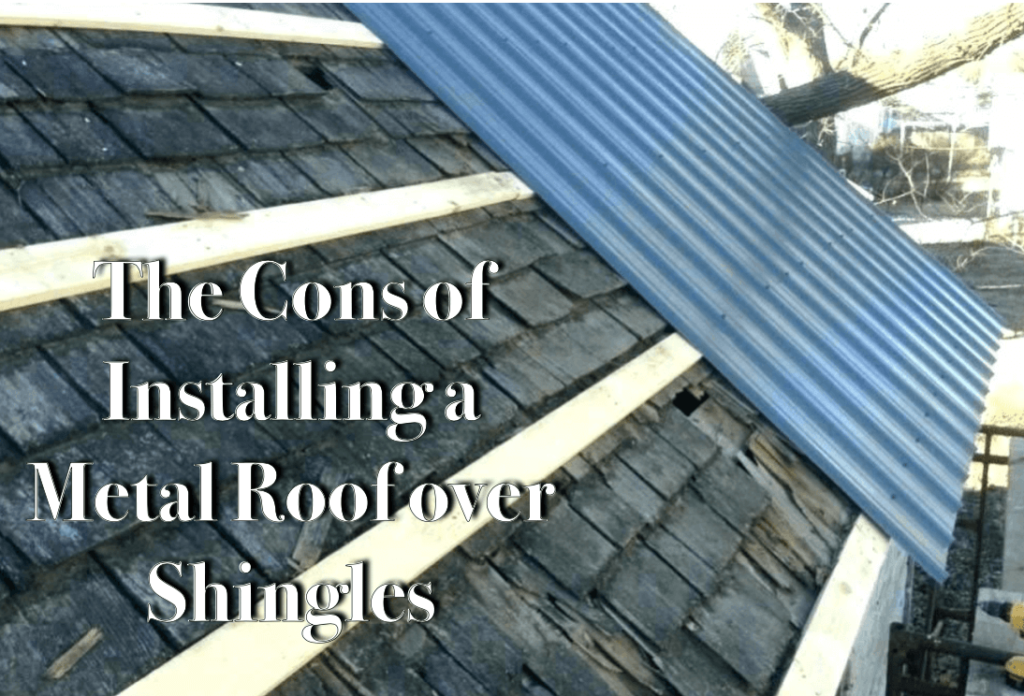If you’re considering installing a metal roof but already have shingles in place, you may be wondering whether it’s necessary to remove them or if it’s safe to leave them underneath. This article explores the pros and cons of leaving shingles under a metal roof, shedding light on the potential benefits and considerations you should keep in mind before making a decision. Whether you’re a homeowner or a roofing professional, this comprehensive guide will help you understand the best course of action when it comes to shingles and metal roofs.

Why Consider Leaving Shingles Under Metal Roof
When it comes to installing a metal roof, one question that often arises is whether to remove the existing shingles or leave them in place. While each situation is unique and should be evaluated by a professional, there are both advantages and disadvantages to consider when making this decision. By weighing these factors and considering your specific circumstances, you can make an informed choice that suits your needs and budget.
Advantages of Leaving Shingles Under Metal Roof
Cost Savings
One significant advantage of leaving the shingles under a metal roof is the potential cost savings. Removing the existing shingles can be a labor-intensive and time-consuming process, requiring additional manpower and disposal expenses. By opting to leave the shingles in place, you can avoid these extra costs and put those savings towards other aspects of your roofing project.
Added Insulation
Another benefit of leaving the shingles is the added insulation it provides. Shingles can act as an extra layer of insulation, helping to regulate the temperature inside your home. This can be especially advantageous in colder climates, as the shingles can help retain heat and reduce energy consumption.
Protection Against Moisture
Leaving the shingles under the metal roof can also provide an additional layer of protection against moisture. If your existing shingles are still in good condition and properly sealed, they can help prevent water infiltration and potential leaks. This added protection can provide peace of mind, especially in areas prone to heavy rainfall or unpredictable weather patterns.
Disadvantages of Leaving Shingles Under Metal Roof
While there are advantages to leaving the shingles, it’s crucial to consider the potential disadvantages as well.
Added Weight on the Roof
One major disadvantage of leaving the shingles is the additional weight they add to your roof. Metal roofs are already heavier than traditional asphalt roofs, and the additional layer of shingles can further strain the structure. It is essential to ensure that your roof’s structure can support the added weight to prevent any safety concerns or structural damage.
Potential for Trap of Moisture
Leaving the shingles in place can potentially trap moisture between the shingles and the metal roof. This trapped moisture can contribute to the deterioration of both the shingles and the metal roof over time. If the existing shingles are in a poor condition or prone to moisture damage, it may be advisable to remove them to prevent long-term issues.
Reduced Energy Efficiency
While leaving shingles can provide added insulation, it may also reduce the overall energy efficiency of your home. Metal roofs are known for their energy-saving properties, reflecting sunlight and reducing cooling costs. However, the presence of shingles can impede this reflective capacity, leading to increased energy consumption.
Factors to Consider
Before deciding whether to leave the shingles under a metal roof, several factors need to be considered. These factors will help determine if leaving the shingles is a suitable option for your specific situation.
Structural Integrity of Existing Shingles
The first factor to evaluate is the structural integrity of the existing shingles. A professional inspection is recommended to determine if the shingles are stable and in good condition. If the shingles are sagging, cracking, or showing signs of significant damage, it may be necessary to remove them before installing the metal roof. However, if the shingles are still structurally sound, leaving them in place might be a viable option.
Type and Condition of Shingles
The type and condition of the shingles also play a crucial role in the decision-making process. Different shingle materials, such as asphalt, wood, tile, or synthetic materials, have varying levels of durability and compatibility with a metal roof. It is essential to assess the shingles’ condition and evaluate their compatibility with the metal roofing system. Shingles that are worn, damaged, or prone to moisture issues may need to be removed to ensure the longevity of the new metal roof.
Climate and Weather Conditions
The climate and weather conditions in your area should also be considered. If you live in an area with heavy rainfall, snow, or high winds, the added weight and potential moisture issues associated with leaving the shingles may pose greater risks. Additionally, the overall lifespan of the shingles and their ability to withstand extreme weather conditions should be evaluated. In regions with more moderate climates, the advantages of leaving the shingles might outweigh the potential drawbacks.
Building Codes and Regulations
Lastly, local building codes and regulations need to be taken into account. Certain jurisdictions may have specific requirements regarding reroofing projects, including the removal of existing shingles. It is essential to consult with local authorities or a professional roofing contractor to ensure compliance with all relevant regulations. Failing to adhere to these guidelines could result in fines or other legal complications.

Structural Integrity of Existing Shingles
To determine the structural integrity of the existing shingles, it is advisable to enlist the expertise of a professional roofer. They will conduct a thorough inspection and evaluate several key factors.
Evaluation by a Professional
A professional roofer will assess the current condition of the shingles and determine if they are stable and capable of supporting the weight of the metal roof. They will inspect for signs of deterioration, such as cracks, curling, or missing pieces, which could compromise the shingles’ integrity.
Extent of Damage or Deterioration
If the shingles are found to be damaged or deteriorated, the extent of the damage will be assessed. Minor damage or localized issues may be repairable, but extensive damage or widespread deterioration would likely require a complete shingle removal.
Compatibility with Metal Roofing
The compatibility of the existing shingles with the metal roofing system will also be considered. Certain shingle materials, such as asphalt or wood, may have different expansion and contraction rates than the metal roof, potentially leading to future problems. The professional roofer will determine if these compatibility issues exist and provide recommendations accordingly.
Type and Condition of Shingles
Different types of shingles have unique characteristics that should be evaluated before making a decision to leave them under a metal roof.
Asphalt Shingles
Asphalt shingles are common in many residential properties due to their durability and affordability. They are relatively lightweight and can often be left in place under a metal roof, especially if they are in good condition. However, it is crucial to assess their compatibility with the metal roof and ensure there are no moisture issues or significant damage that could compromise the performance of the new roof.
Wood Shingles
Wood shingles provide a natural and aesthetic appeal to homes but require regular maintenance to prevent rot and deterioration. If the wood shingles are still in good condition and free from moisture damage, they might be suitable to remain under a metal roof. However, thorough inspection and evaluation by a professional are recommended to ensure their compatibility and longevity.
Tile or Slate Shingles
Tile or slate shingles are known for their durability and longevity. However, their weight should be carefully considered when deciding whether or not to leave them in place. If the existing structure can support the additional weight of the metal roof and the tile or slate shingles are in good condition, they can often be left intact. Professional evaluation is vital to assess compatibility and structural integrity.
Synthetic or Composite Shingles
Synthetic or composite shingles, such as those made from rubber or plastic, can withstand various climate conditions and have excellent durability. If the synthetic shingles are in good condition and compatible with the metal roof, leaving them in place can provide added benefits such as increased insulation and protection against moisture.

Climate and Weather Conditions
The climate and weather conditions in your area play a significant role in the decision-making process. Different weather patterns can impact the advantages and disadvantages of leaving the shingles under the metal roof.
Rainfall and Precipitation
Areas with high rainfall or frequent precipitation may experience more moisture-related issues if the shingles are left in place. The presence of moisture between the shingles and the metal roof can lead to mold, rot, and potential leaks. In such regions, it may be advisable to remove the shingles to mitigate these risks.
Snow Load
If you live in an area with heavy snowfall, the added weight of the shingles can be a concern. Metal roofs are designed to shed snow more efficiently than shingle roofs. Leaving the shingles in place can increase the snow load on your roof, potentially compromising its structural integrity. Evaluating your roof’s ability to handle the combined weight of the shingles and the new metal roof is crucial in regions prone to heavy snowfall.
Wind Resistance
The wind resistance of a roofing system is essential, especially in areas with frequent high winds or hurricanes. Leaving shingles in place can reduce the wind uplift resistance of the metal roof, especially if the shingles are worn or not securely fastened. Ensuring the shingles’ ability to withstand strong winds and evaluating the metal roof’s wind resistance is vital to protecting your home from potential damage.
Building Codes and Regulations
Local building codes and regulations govern the requirements for reroofing projects, including whether or not existing shingles must be removed. It is crucial to consult with local authorities or a professional roofing contractor to determine the specific regulations in your area.
Local Building Codes
Building codes may stipulate that all existing shingles must be removed before installing a new roof, regardless of their condition. These codes are in place to ensure compliance with safety standards and to guarantee the proper installation of the new roof.
Permitting Requirements
In addition to complying with local building codes, many jurisdictions require permits for roofing projects. The permitting process typically involves submitting an application, paying fees, and scheduling inspections. It is essential to understand and adhere to these permitting requirements to avoid potential legal issues and ensure the work is completed safely and up to code.

Cost Savings
One of the primary advantages of leaving the shingles under the metal roof is the potential for cost savings. By avoiding the removal and disposal of the existing shingles, you can reduce overall project expenses.
Savings on Roof Tear-off and Disposal
Removing shingles is a labor-intensive process that requires additional time and effort. By leaving them in place, you can save on the costs associated with tear-off labor and disposal fees. This can make a significant difference, especially for homeowners on a tight budget.
Reduced Labor Costs
Leaving the shingles can also help reduce labor costs associated with the roofing project. Rather than spending time and resources on removing the shingles, workers can focus on installing the metal roof more efficiently. This can result in lower overall labor costs and a faster project timeline.
Documentation and Inspections
When leaving the shingles under the metal roof, it is important to comply with documentation and inspection requirements. This ensures that the installation meets all relevant regulations and provides peace of mind for homeowners.
Permitting Process
Before starting the roofing project, you must obtain any necessary permits required by local authorities. This typically involves submitting an application, paying fees, and providing the necessary documentation. Following the permitting process helps ensure compliance with building codes and safeguards the structural integrity of your roof.
Municipal Inspections
During the roofing project, it is important to schedule and pass the necessary inspections mandated by the local municipality. These inspections verify that the installation meets all safety requirements and building codes. By obtaining the required inspections, you can ensure the quality and longevity of your metal roof.
In conclusion, the decision to leave the shingles under a metal roof requires careful consideration of various factors. By evaluating the structural integrity of the existing shingles, the type and condition of the shingles, the climate and weather conditions, and the local building codes and regulations, you can make an informed choice. While leaving the shingles can provide cost savings, added insulation, and protection against moisture, it is important to weigh the potential disadvantages such as added weight, the risk of trapped moisture, and reduced energy efficiency. Consulting with a professional roofer and complying with all relevant documentation and inspection requirements will help ensure a successful roofing project that meets your specific needs.
